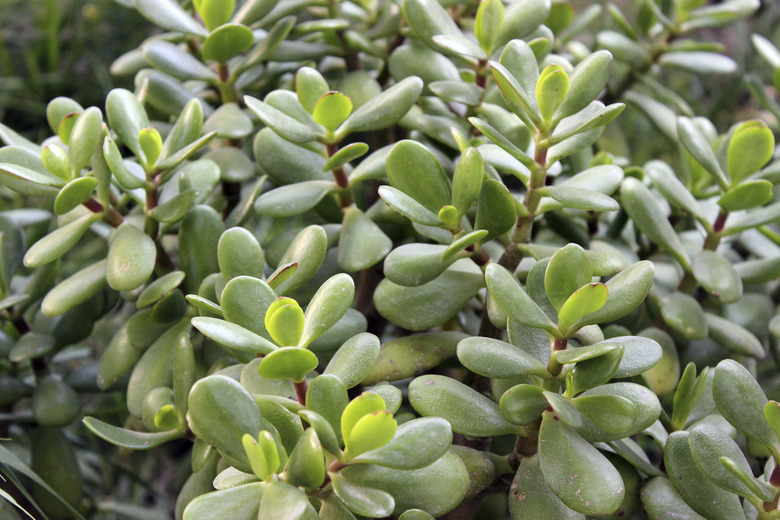Are Jade Plants Poisonous?
We may receive a commission on purchases made from links.
It's often offered as a gift and tucked in plant pots on windowsills to bring good luck. The jade plant (Crassula ovata, formerly Crassula argentea, USDA zones 11-12) is a beautiful addition to your home and is easy to care for.
While the common houseplant is not dangerous on its own, it can be slightly toxic when ingested by humans or animals and can cause a range of symptoms. Sap from a cut leaf can cause skin irritation. If any parts of the plant are eaten, it can cause a range of problems, from nausea to diarrhea.
Tip
Generally, a jade plant is not toxic if left alone in its pot or garden bed. However, it can cause minor problems if ingested or accidentally rubbed against by humans or animals.
Jade Plant Facts and Tips
Jade Plant Facts and Tips
While the jade plant is known to have mild toxicity for humans, it is used in some parts of the world for homeopathic remedies. The stone lotus jade plant has pointed leaves and is used to treat diabetic symptoms in China. Jade plants have also been used to treat nausea.
Also called the money plant, money tree or lucky plant, the jade plant is a perennial only in U.S. Department of Agriculture hardiness zones 11 and 12, but it's easily grown as a houseplant in all climates. The seasonal plant is flush with pink or white flowers that will start to emerge during winter and bloom through spring.
There are many different types of jade plants, but each requires the same type of care. Bright sun is required for at least four hours of the day. During warmer months, jade plants should be watered only when the top layer of soil is dry. Keep the soil moist but not wet. In winter, water only once a month.
Toxicity of the Jade Plant
Toxicity of the Jade Plant
The University of California rates the toxicity of plants, giving a rating of "1" for major toxicity, "2" for minor toxicity, "3" for oxalates, where the juice or sap from the plant can irritate the skin or result in breathing difficulties and pain, and "4" for dermatitis, where the plant's sap or juice or thorns can cause a rash when it comes in contact with the skin. The toxicity of the jade plant is rated "2" and "4."
Potential Issues of Ingesting Jade Plants
Potential Issues of Ingesting Jade Plants
The jade plant can be toxic if ingested by humans, horses, dogs and cats. The effects on humans are less intense than those on your four-legged friends. Simply brushing the jade plant shouldn't cause any irritation. However, if the woody stems or a cut leaf scratches the skin or if sap from the plant comes in contact with the skin, then it can lead to symptoms.
For kids or adults who have ingested the plant, the sap can cause swelling of the mouth, tongue and throat. This can lead to upper respiratory issues, breathing problems and an upset stomach. Skin may show signs of redness. Some people experience a burning sensation where the plant's sap has made contact with the skin. If the reaction is severe, call a doctor or the poison hotline in your area.
Symptoms for animals that have nibbled on parts of a jade plant include vomiting, diarrhea, dizziness, lack of coordination and depression. Look for signs of drooling, excessive scratching, lethargy or abdominal pain in the animal if you suspect it has been eating the plant or has come in contact with it. If parts of the plant have been ingested or a rash appears where skin has been in contact with the plant, call a veterinarian for further instructions.
